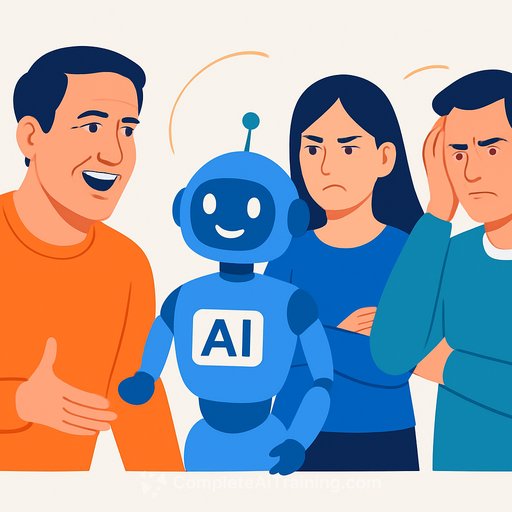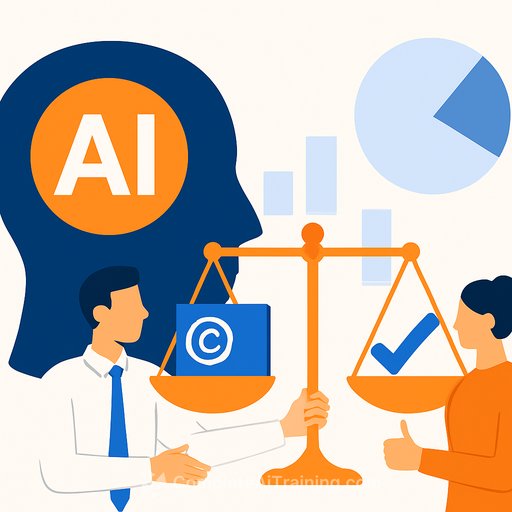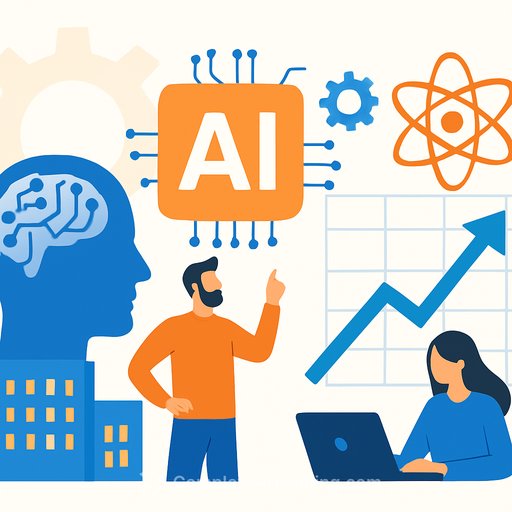DC Comics' anti-AI stance: a realignment creatives can use
At New York Comic Con, DC Comics president Jim Lee drew a hard line: the company will "not support AI-generated storytelling or artwork. Not now, not ever, as long as Anne DePies and I are in charge."
He didn't lean on legal gray areas or ethics debates. He pointed to demand. "People have an instinctive reaction to what feels authentic. We recoil from what feels fake."
For a major publisher like DC Comics, that clarity matters. It sets a public standard: finished creative work should feel human, because that's what audiences pay for.
Why this matters to working creatives
Clients often chase efficiency signals to please investors. That's why many have felt pressured to "use AI" somewhere, anywhere. DC just reframed the conversation: quality and authenticity beat shortcuts in the final product.
Audiences accept AI for memes and quick filters. They reject it when it replaces the craft they care about-illustration, storytelling, character design, animation, sound. If the end result looks or feels synthetic, they bounce.
The commercial argument is simple
"AI doesn't dream. It doesn't feel. It doesn't make art. It aggregates it." Lee's words boil it down. If your buyer can sense the aggregation, they stop seeing value.
That puts real, visible craft back at the center. Expect more brands to test "human-made" as a differentiator while others wrestle with mixed messages and legal risks.
Could others follow DC's lead?
Some studios try to have it both ways-experiment with AI behind the scenes while defending IP in public. That's a tightrope with no winning narrative. DC sidesteps the mess by stating what they will and won't do.
Given DC's weight in comics, this stance gives permission for other creative-led companies to reassert human authorship as policy, not just preference.
What to do now: practical moves for creatives
- Publish a clear position: where you do and do not use AI in your process. Keep it short. Put it on your site and proposals.
- Update contracts: add "no AI-generated final deliverables" clauses if that aligns with your work. Protect credits and training data.
- Show your process: pencils-to-inks, mood boards-to-frames, drafts-to-final. Proof of work builds trust.
- Label your portfolio: "Human-made" or "Hand-drawn" where relevant. Make authenticity scannable.
- Price the human advantage: sell taste, judgment, and iteration speed-not just outputs. Explain what clients actually get.
- Offer audits: help clients identify where AI degrades quality vs. where it can support admin or research.
Where AI can fit without hurting the art
If you choose to use AI, keep it outside the final creative: research summaries, transcription, scheduling, file naming, reference gathering. Use it to clear the noise so you can spend more time on taste and craft.
Want ideas for streamlining low-value tasks? Explore practical workflows here: AI for automation.
The signal you can send
DC's stance is a reminder: the market rewards work that feels alive. If your output has heart, audiences will find it-and they'll pay for it.
For fans, it means Superman and the rest stay in human hands. For creatives, it's permission to double down on craft. At least while Lee is in charge.
Your membership also unlocks:






